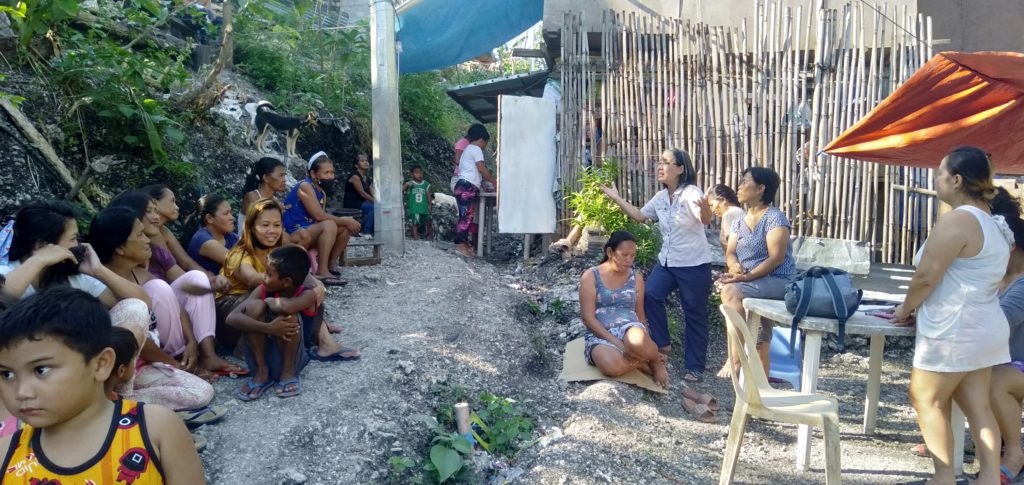December 2017 – December 2019
The Visayas Primary Healthcare Services, Inc. implemented a health project in eight barangays in the Municipality of Medellin and Municipality in Daanbantayan in the northern part of Cebu Province last December 2017 to December 2019.
The project was implemented in Barangays Maharuhay, Daanlungsod, Kawit, Gibitngil, Antipolo, Mahawak, and Dalingding Sur in Medellin and Barangay Malingin in Daanbantayan.
The project was part of a big project by the Cebu-Bohol Relief and Rehabilitation Center (CRRC) that aimed to promote wholistic poverty alleviation, social development of the eight communities through various programs and services which included among others capability building, livelihood programs and health.
The project was supported by the Caritas Austria whose programs underscores its enduring commitment to prevent and ease the hardships of people in need. It is based in Vienna, Austria. Their claimed mission is to work to build a better world, especially for the poor and oppressed.
The project partnered with local people’s organizations to implement the activities.
At the core of the project are community health workers (CHWs) trained to render basic preventive and promotive health care and treat common illnesses using locally available herbal plants, water therapy, natural healing, Traditional Chinese Medicine such as acupressure and cupping therapy and essential Western medicine. Health education classes are conducted by trained CHWs on topics such as hypertension, tuberculosis, nutrition, diabetes, care of child with cough and diarrhea, and dengue fever, among other common health problems affecting the communities
Trained CHWs screen residents for hypertension and refer them to government health centers for treatment. Residents who are symptomatic for tuberculosis are referred to barangay health centers for sputum examination so that they can avail of free anti-tuberculosis treatment. Diabetic patients are also advised to have regular medical check up.
Preschoolers have regular growth monitoring and mothers practice proper nutrition. Mothers use herbal medicines for common complaints, such as lagundi, tamarind and calamansi for cough, homemade liniment of ginger, red pepper and garlic, cupping therapy and acupressure for muscle pains, homemade ointment of temple flower, moringa and hemlock ointment for skin infections common among children, and homemade ginger tea for stomach pains and sore throat.
Mothers are able to identify signs and symptoms of pneumonia of their children and refer them quickly to health centers for treatment, and children with diarrhea are given homemade oral rehydration salts solution to prevent dehydration.
Mothers who desire family planning are referred by CHWs to avail of contraceptive commodities in the government health centers while pregnant women are followed up by CHWs to have regular prenatal care, safe delivery in health facilities and postpartum care. A healthy diet and lifestyle and regular exercise are also advised among pregnant mothers. CHWs also provide mothers with knowledge about pregnancy complications and promote kind counselling to improve the maternal health care seeking behaviors of women. CHWs also promote breastfeeding and continued proper nutrition among postpartum mothers, immunization for their newborns and healthy postnatal care.
As part of our program on nutrition, vegetable gardens are grown in their vast agricultural land. They include lady’s finger, eggplant, string beans, bitter gourd, moringa, and sweet potato tops, among other plants.
By training community health workers, we empower them to render preventive, promotive and selective curative care to their residents. They have voluntarily served, without any monetary compensation, their fellow community residents. Our trained CHWs are effective health service providers and health educators who can mobilize their community residents to address primary level health problems and develop sustainable primary health care programs.



